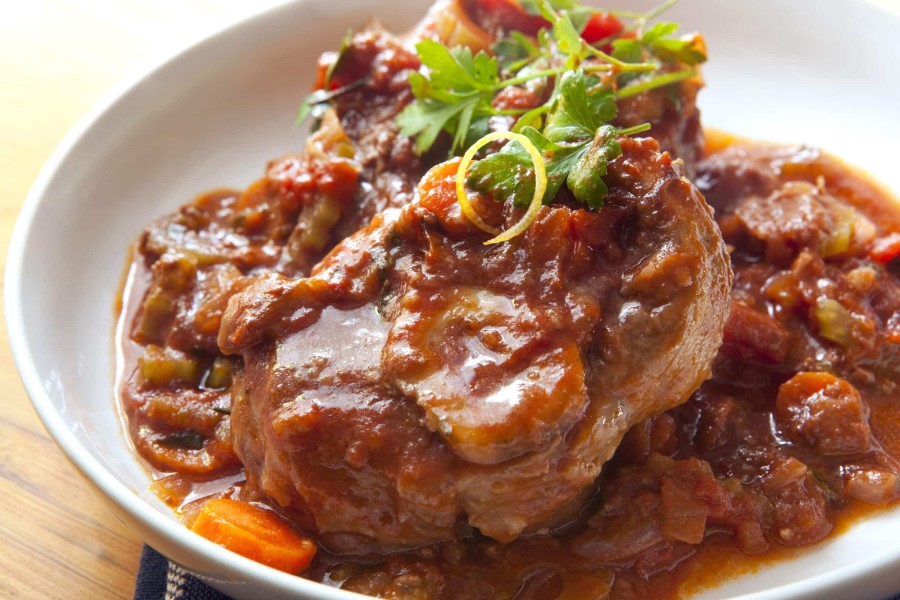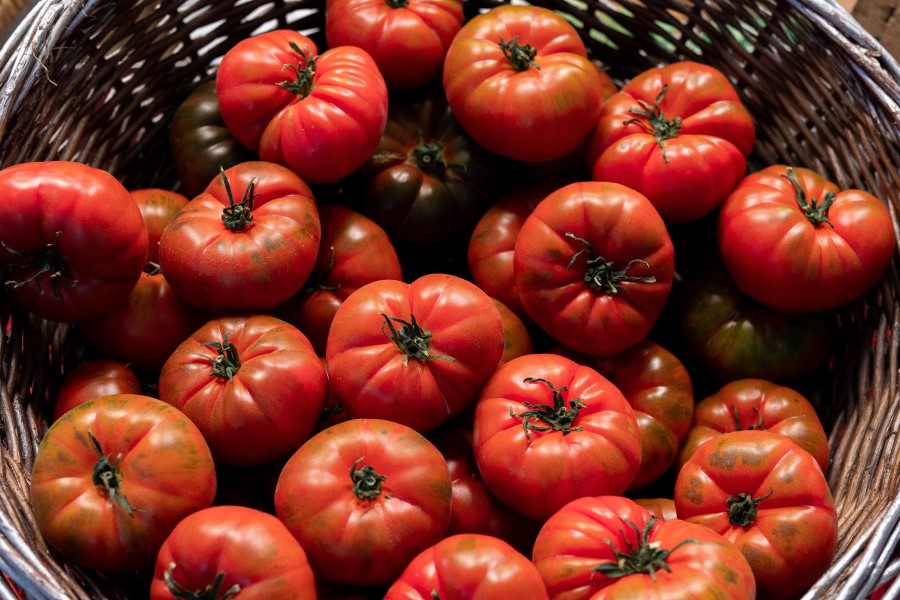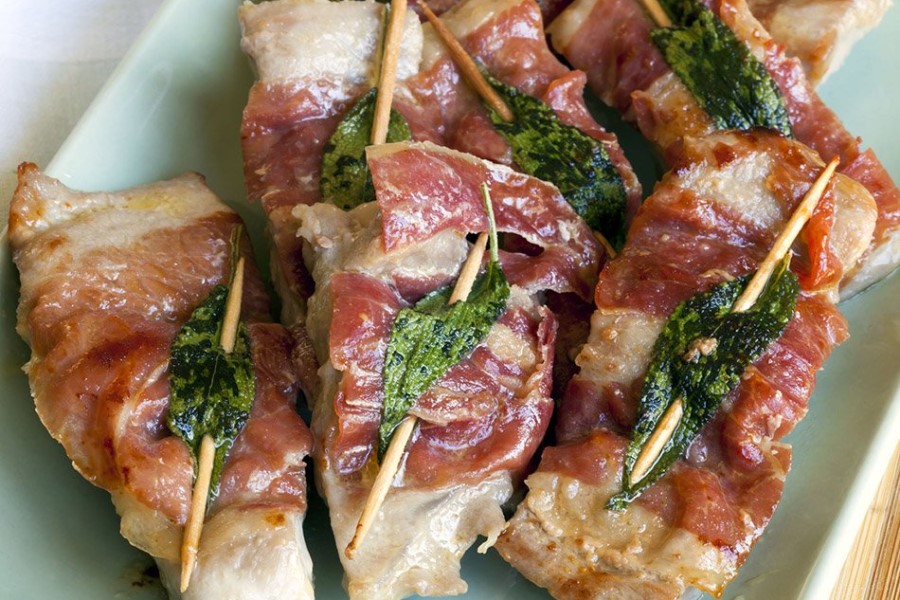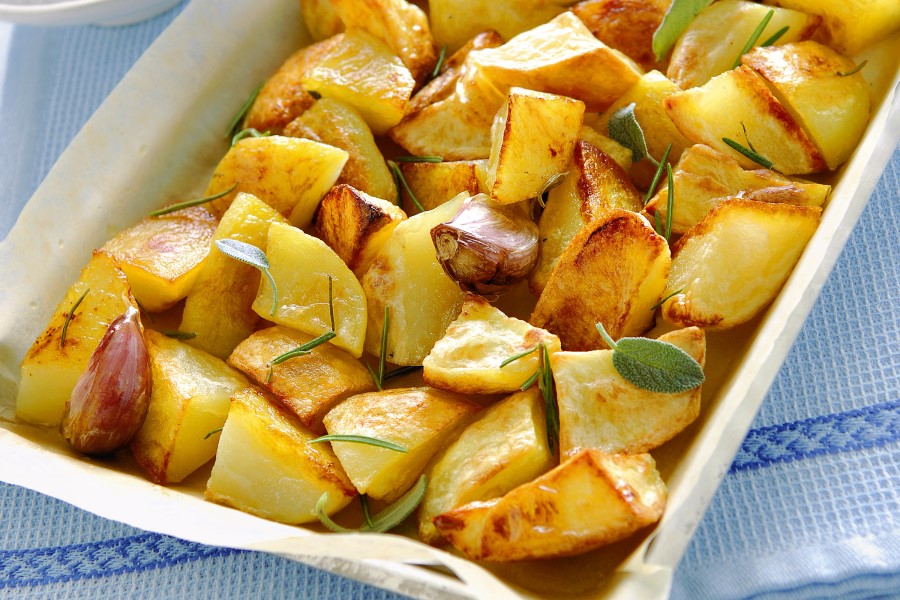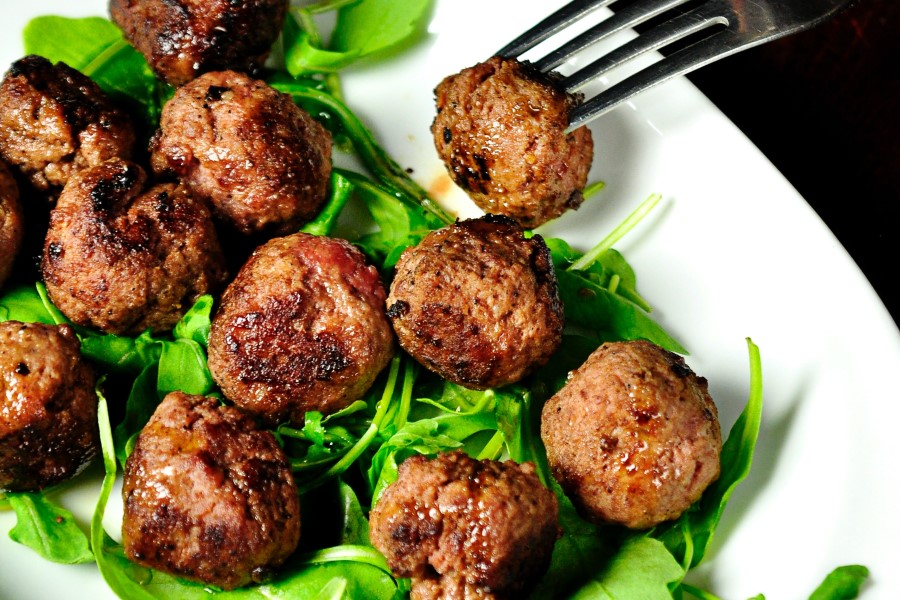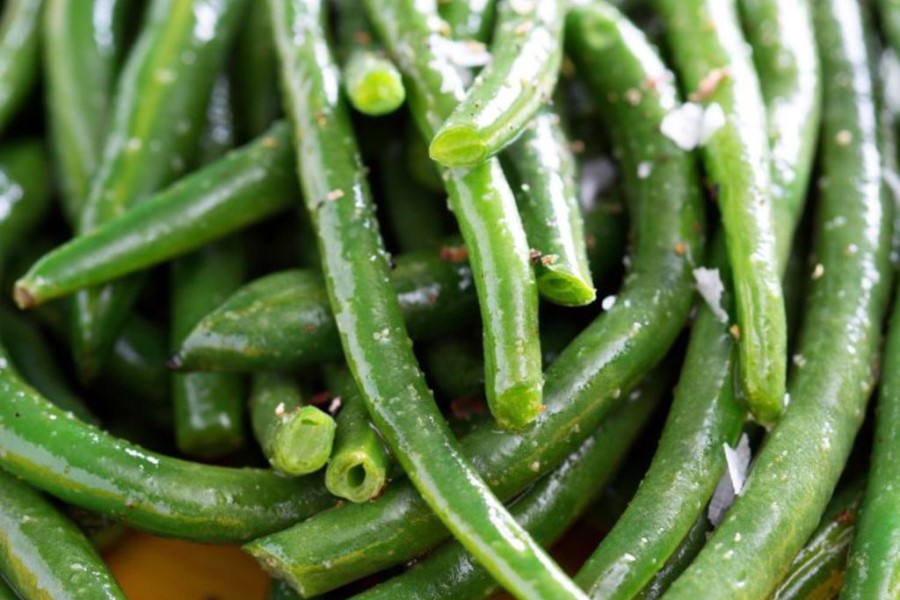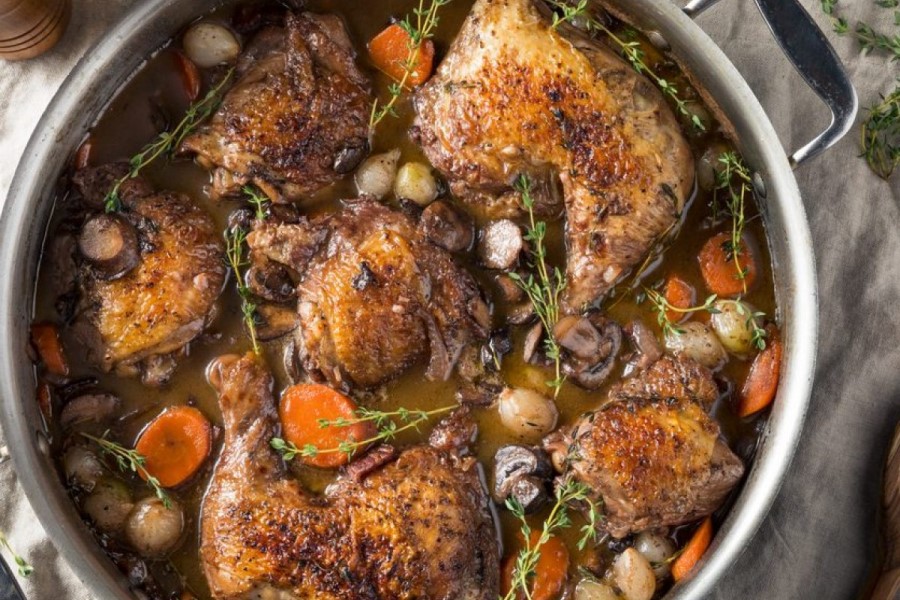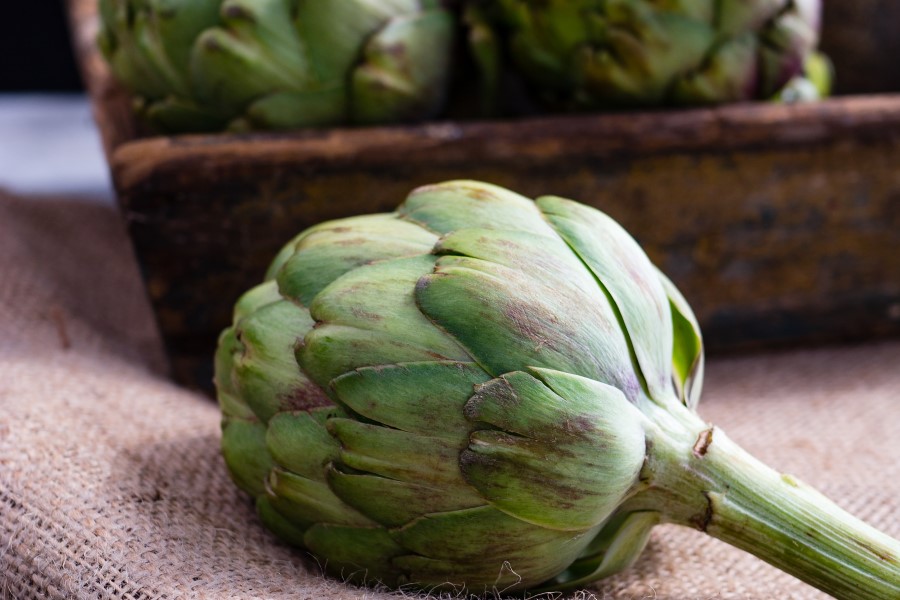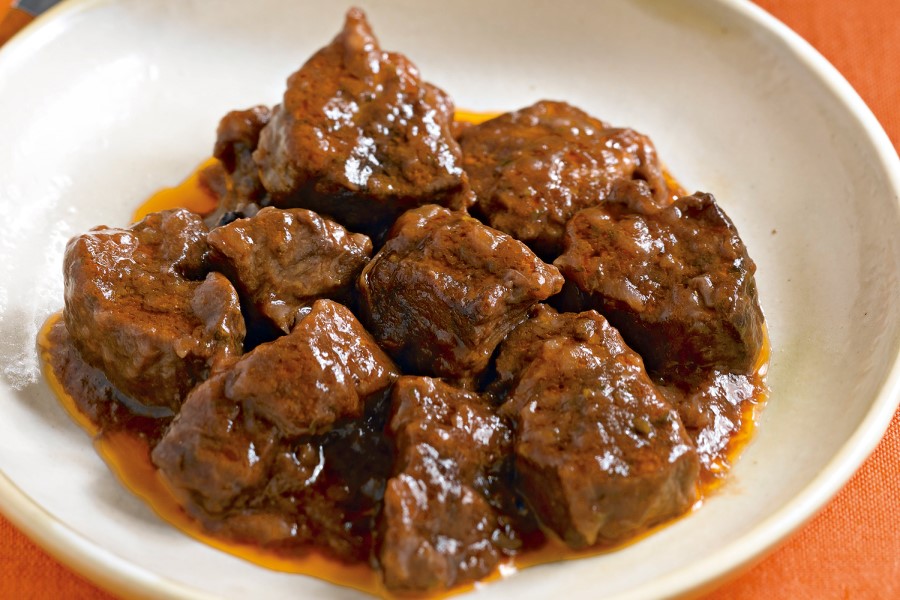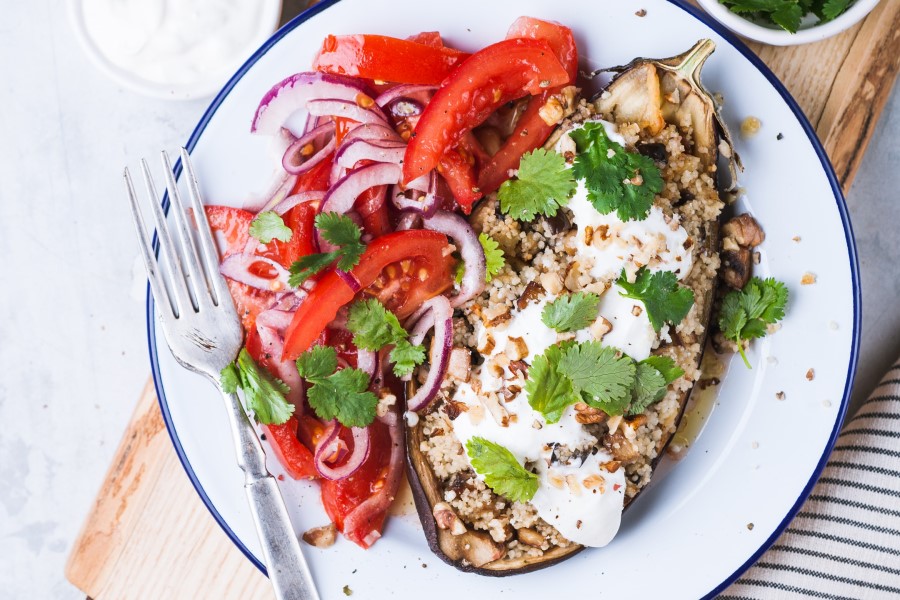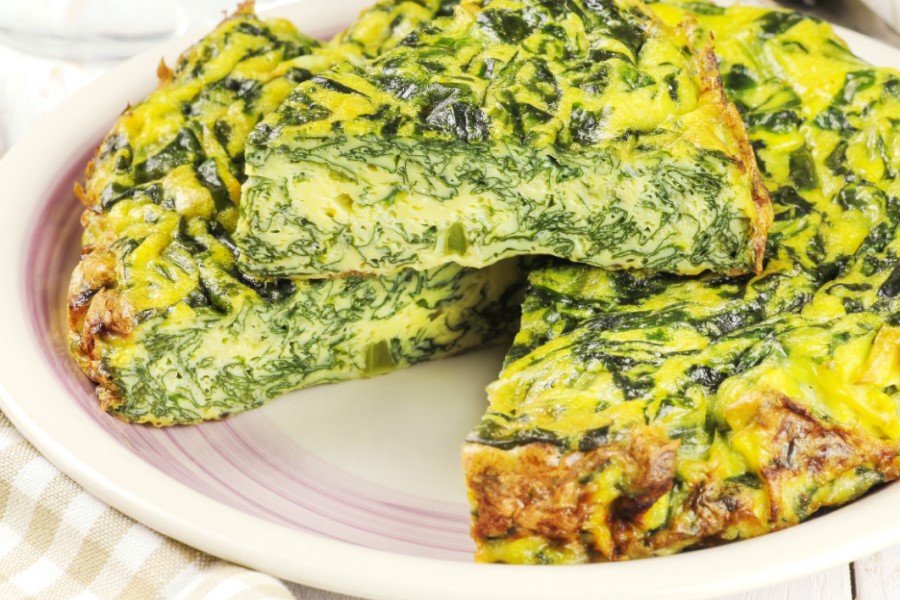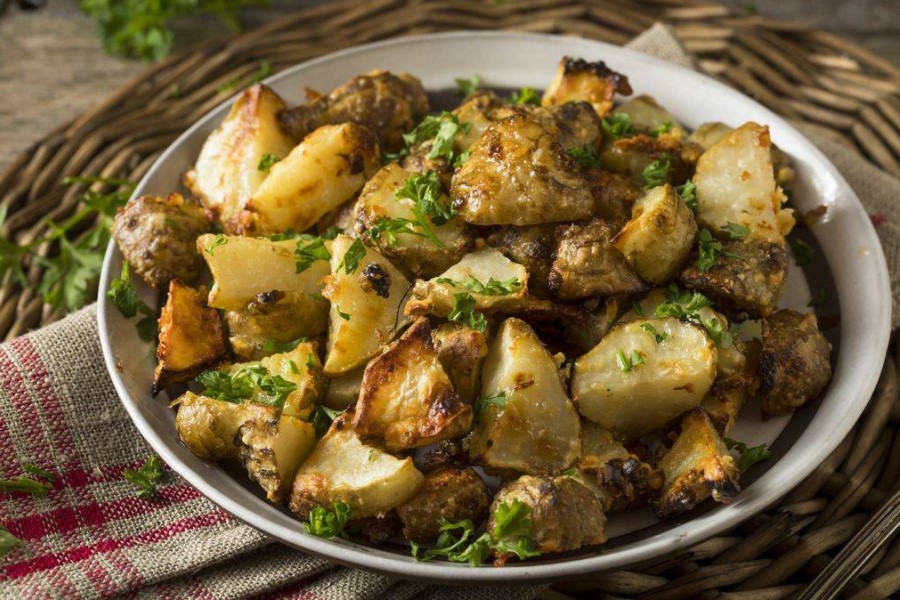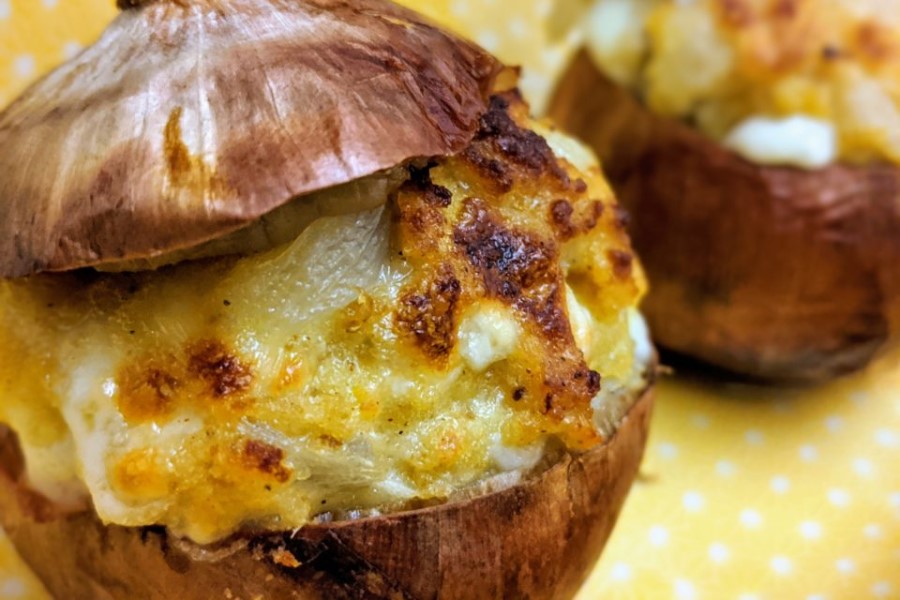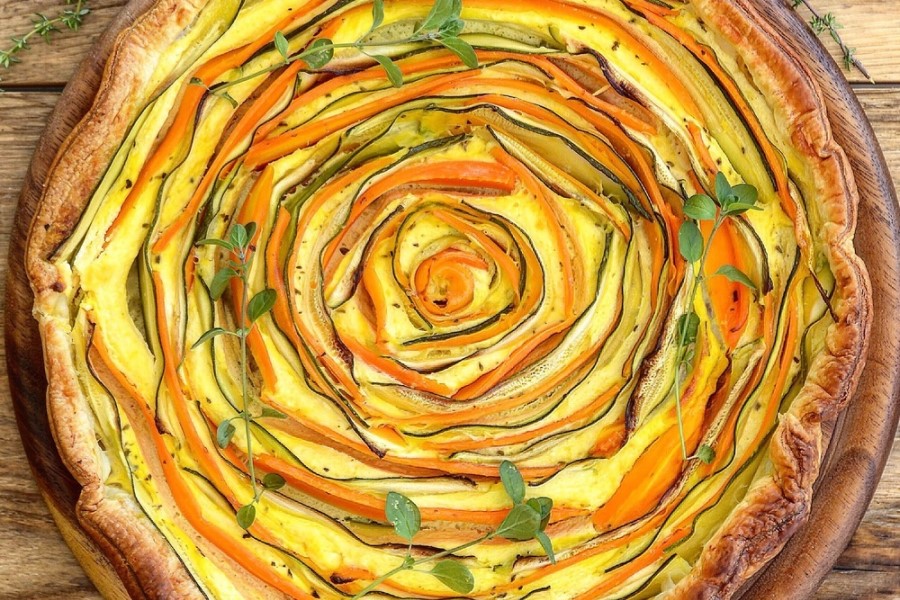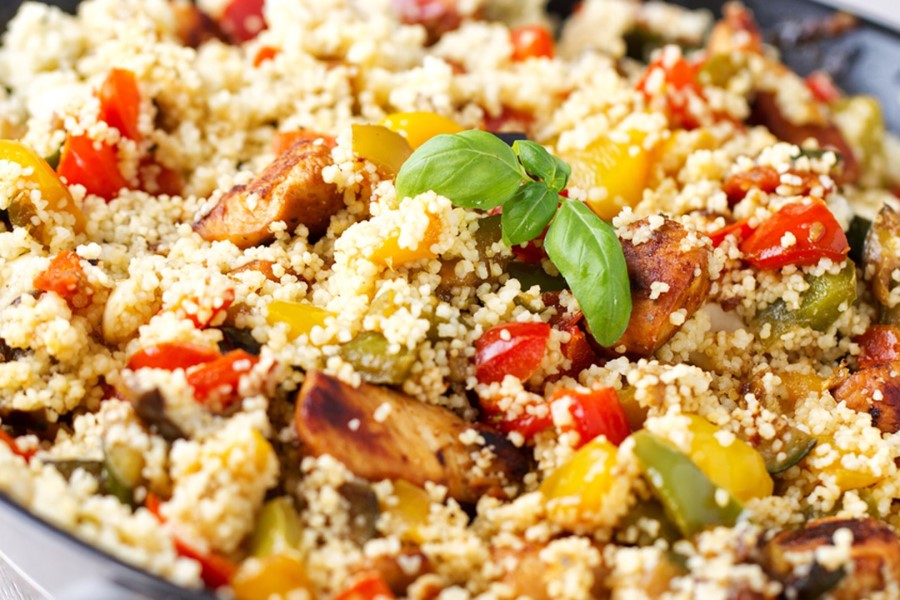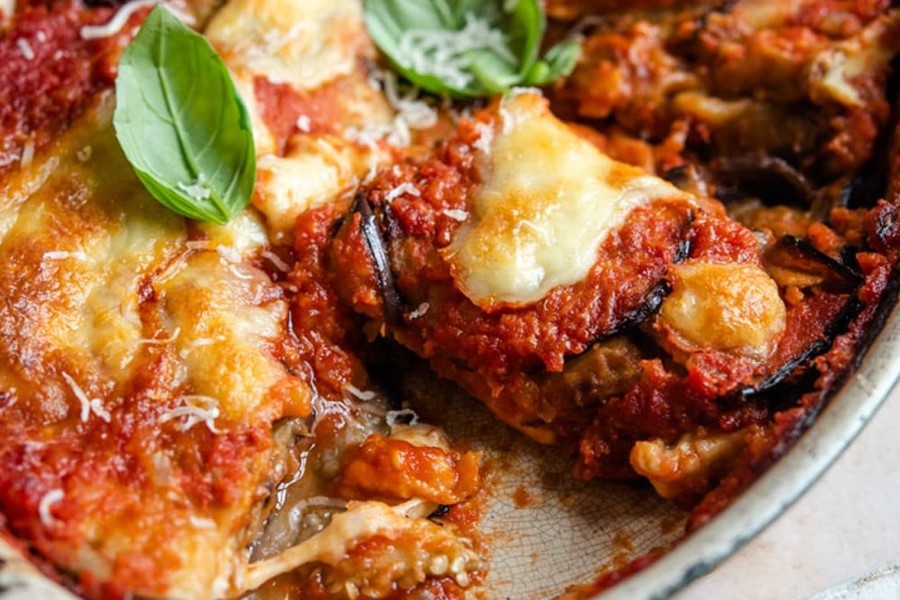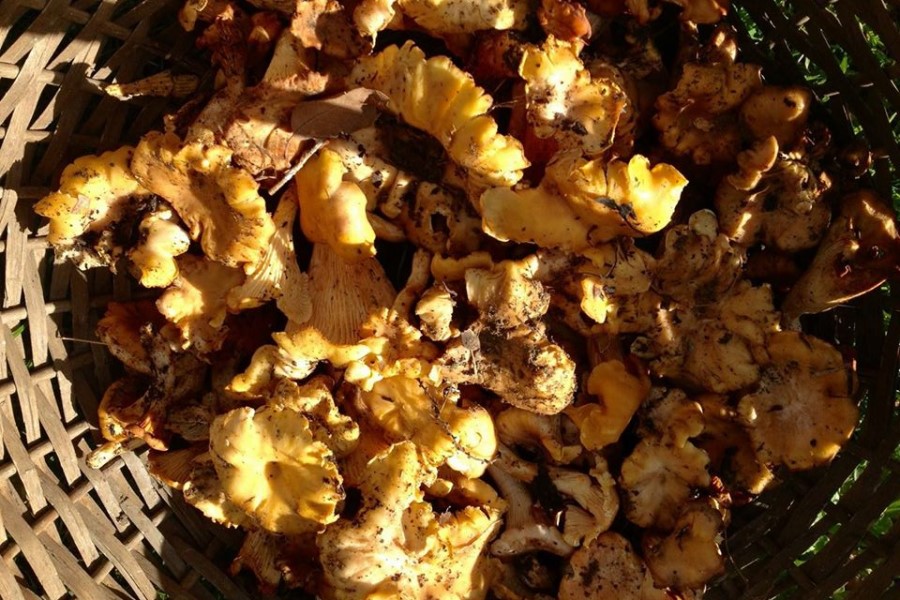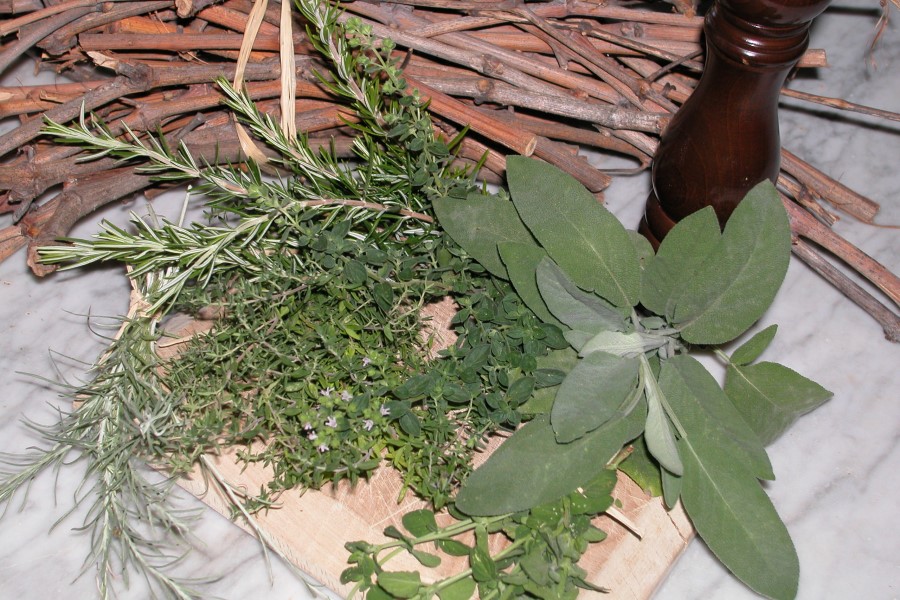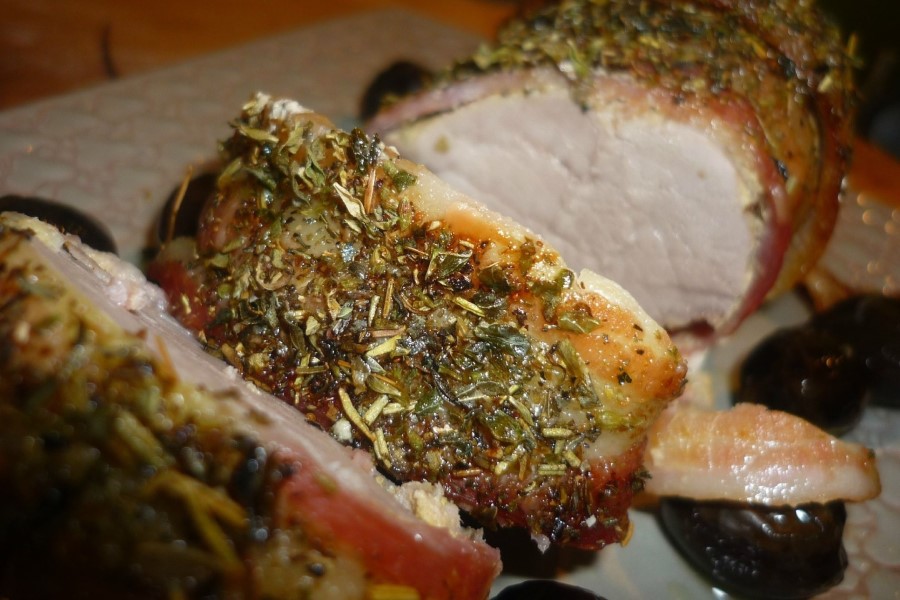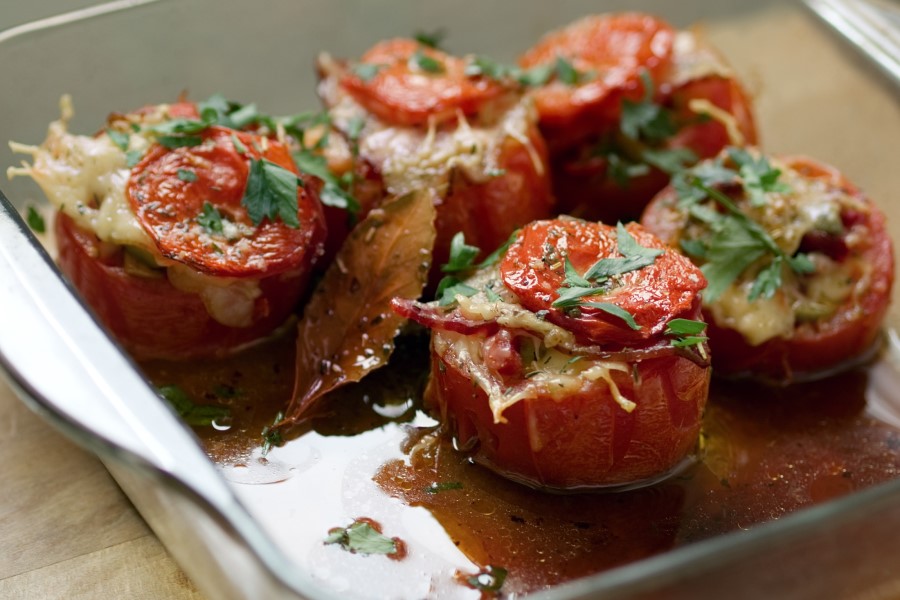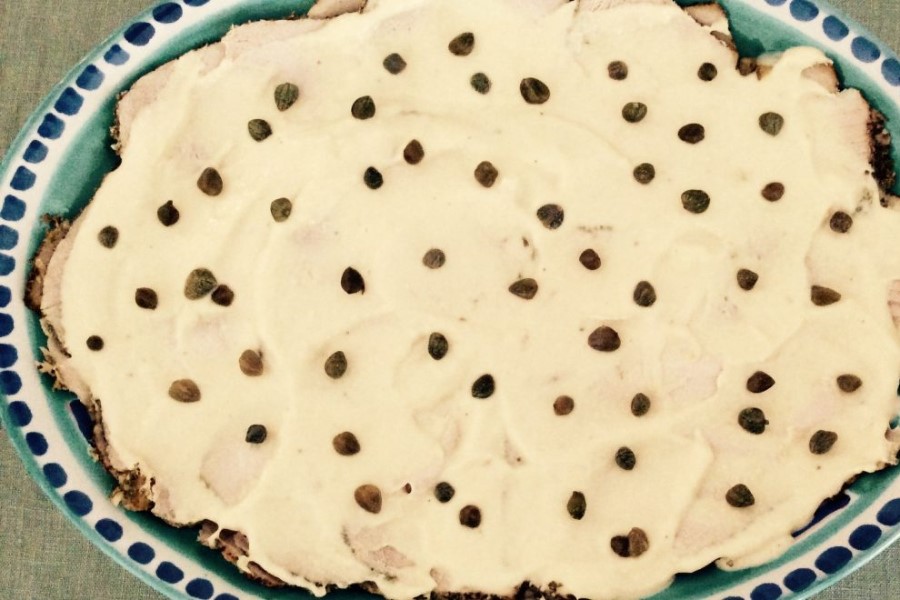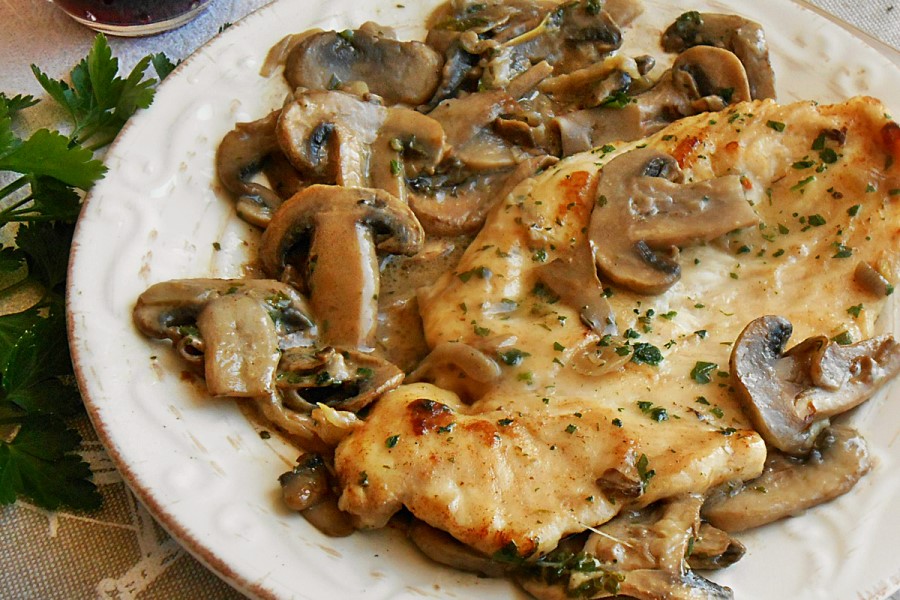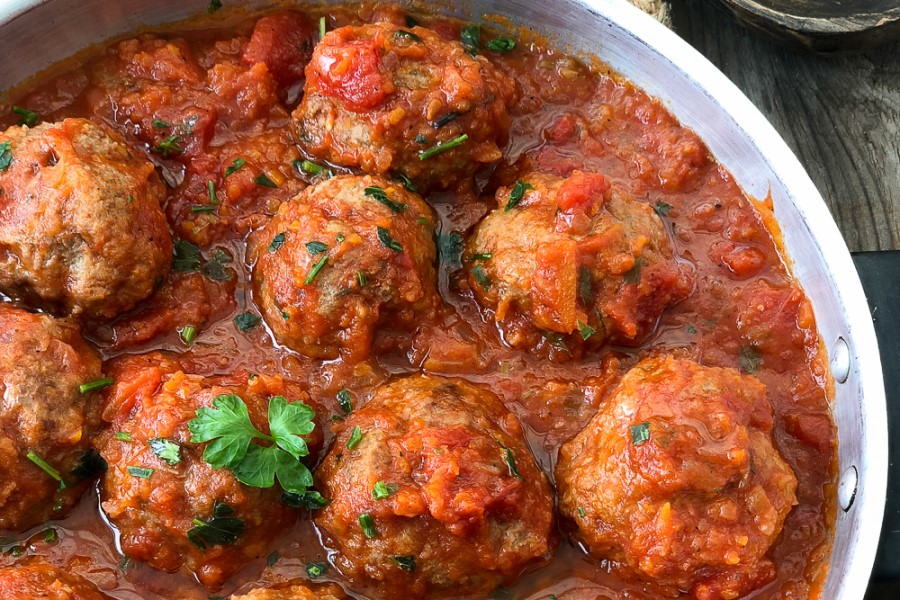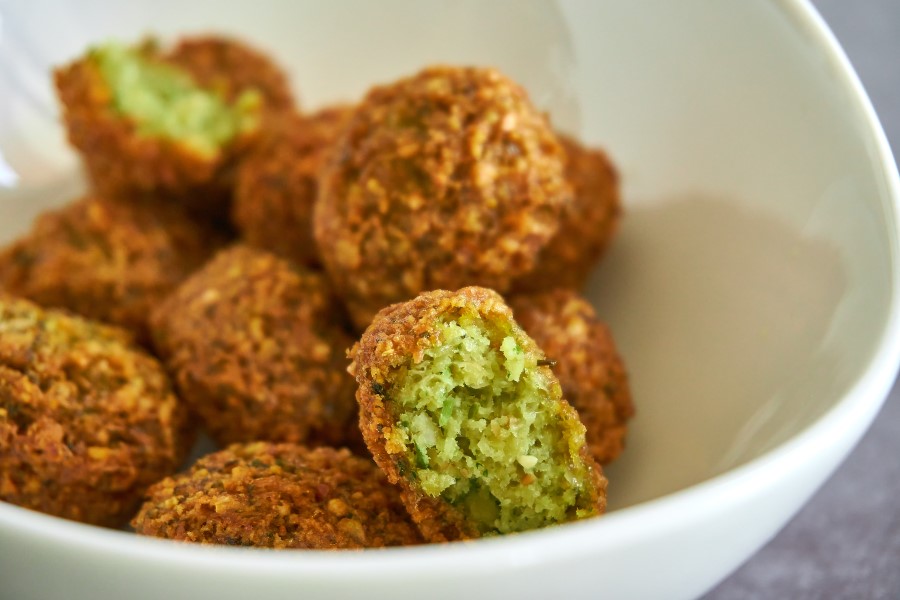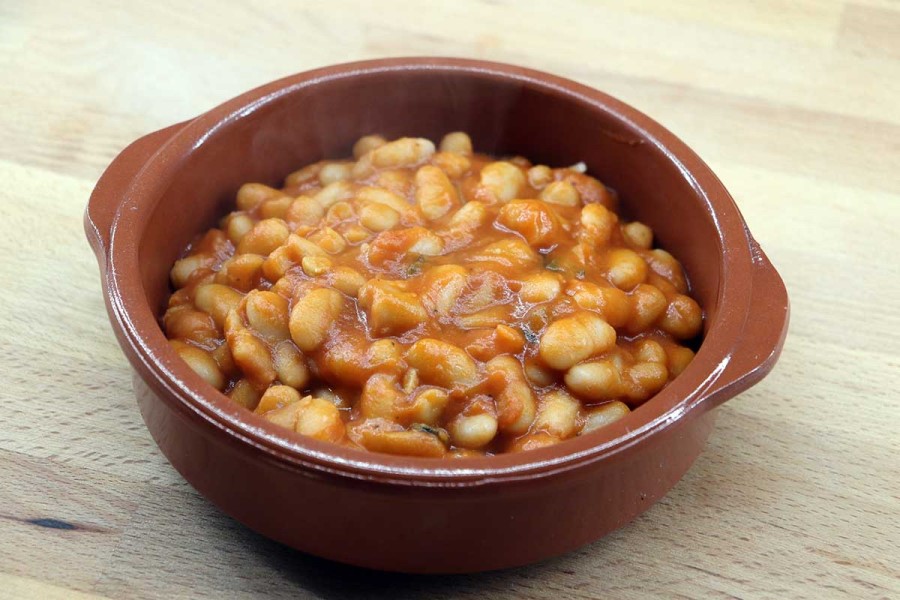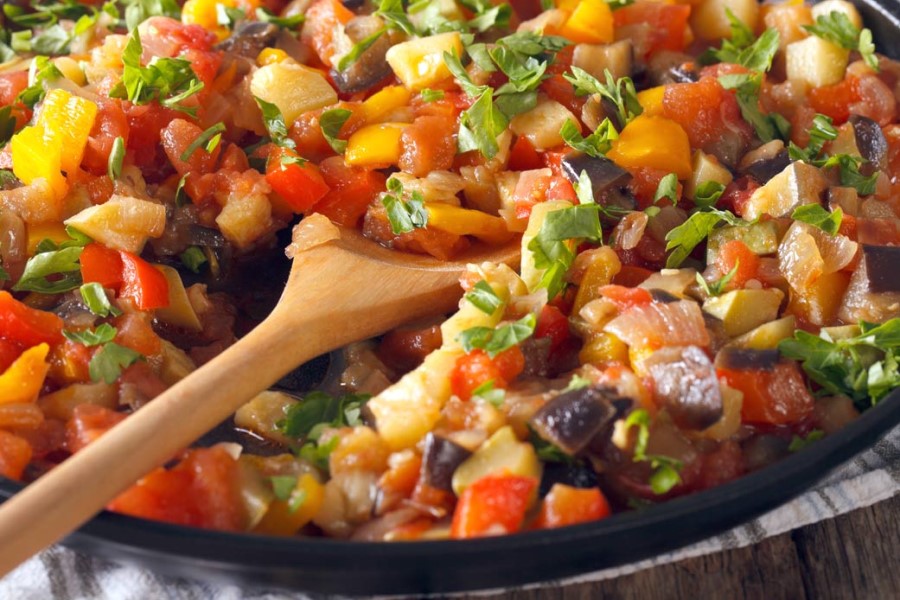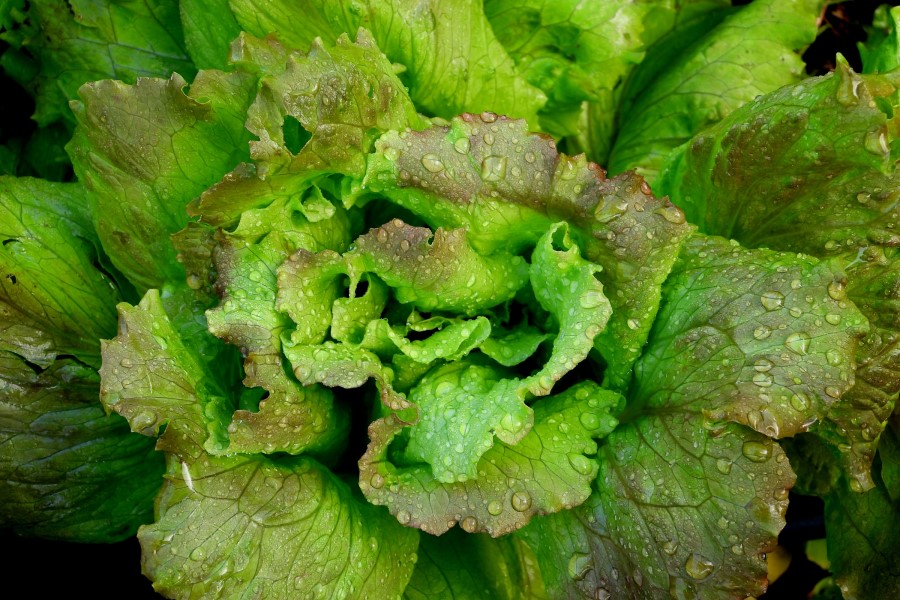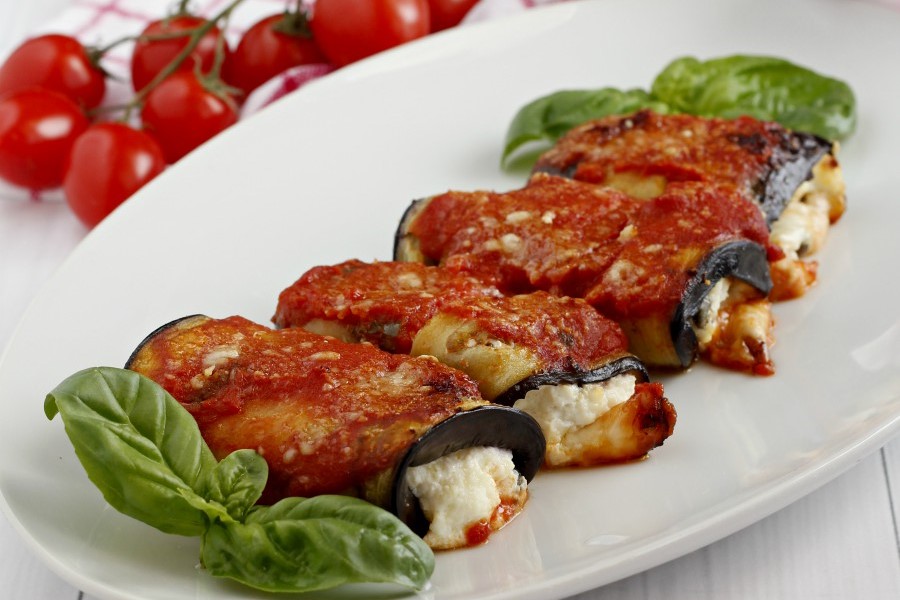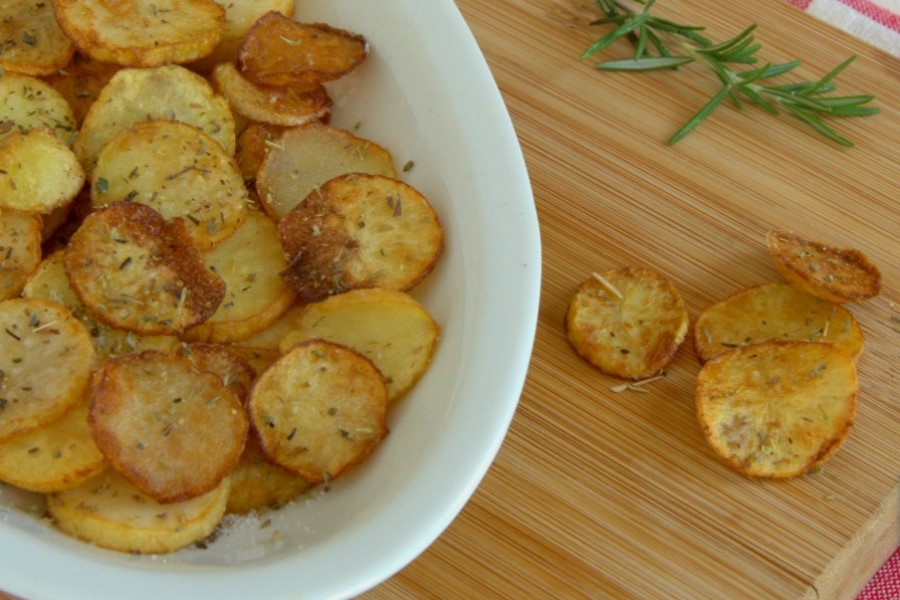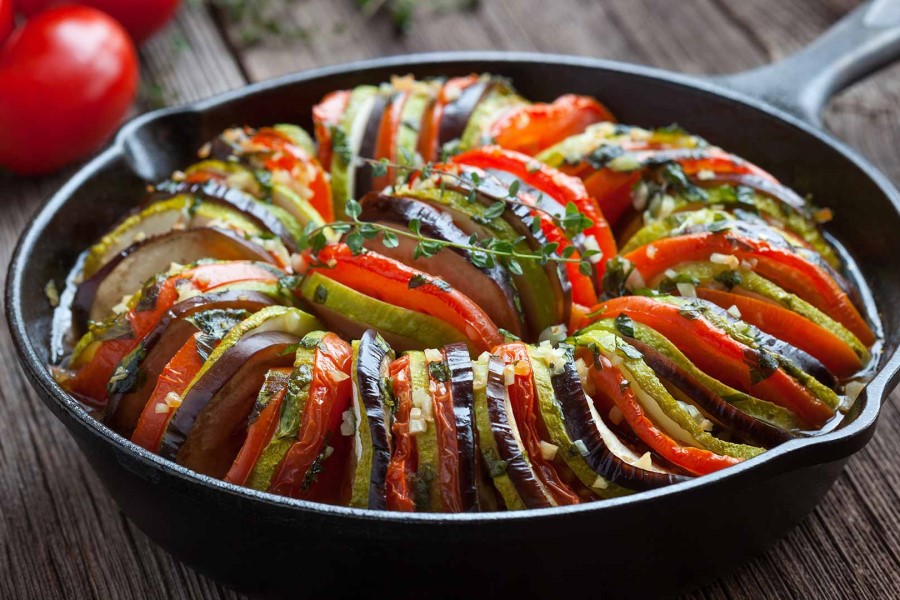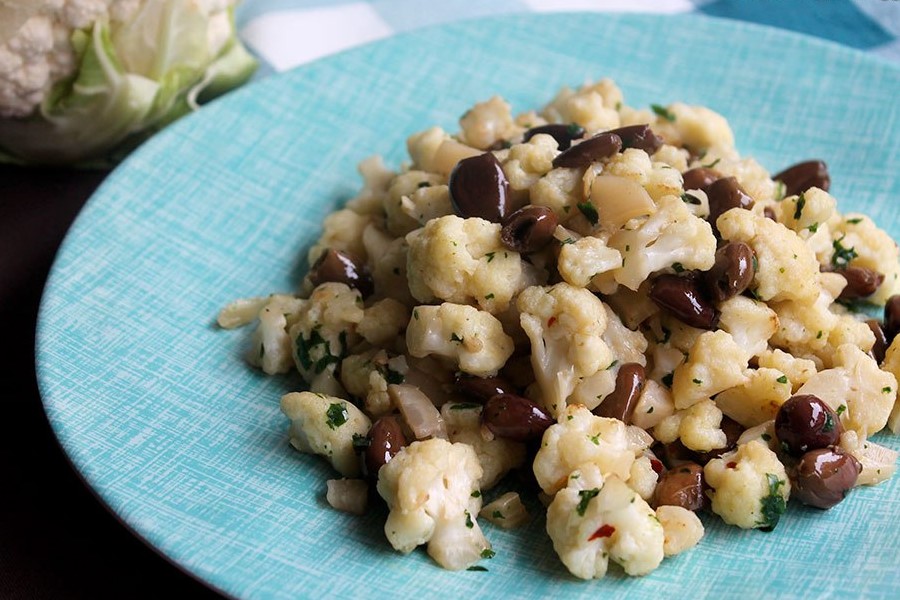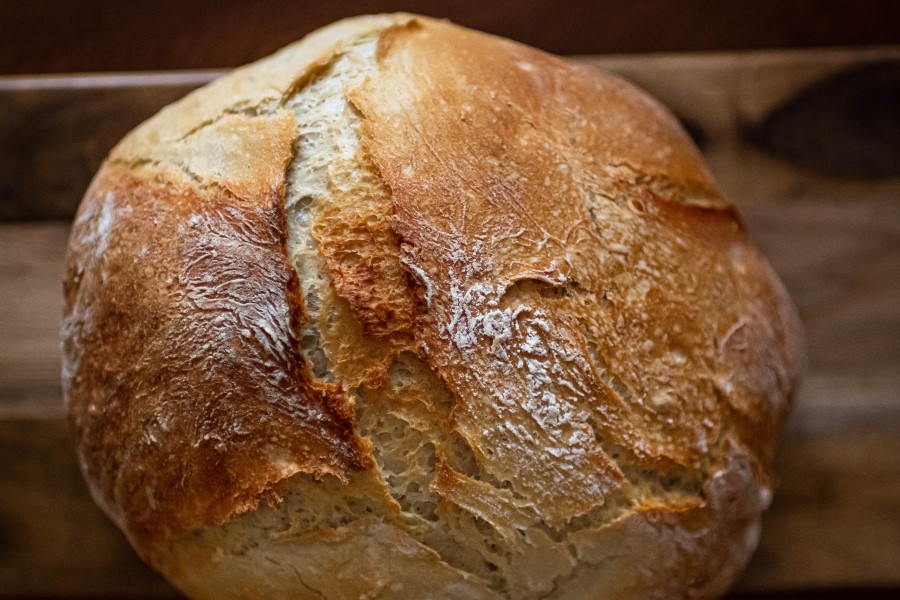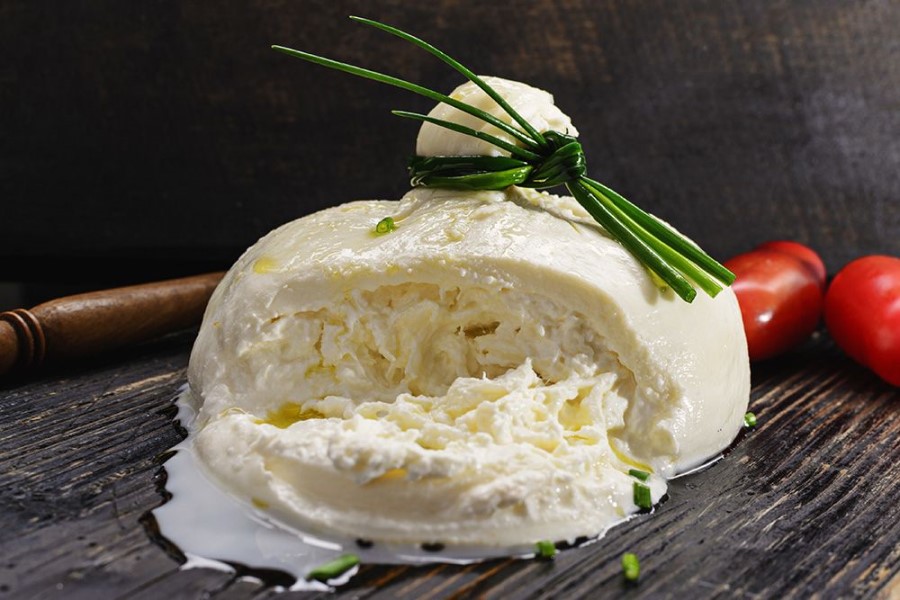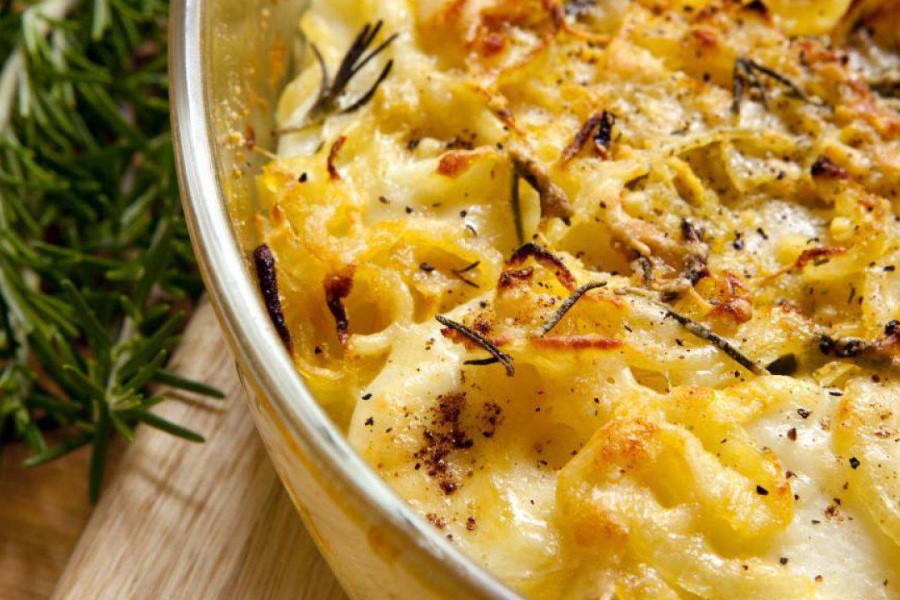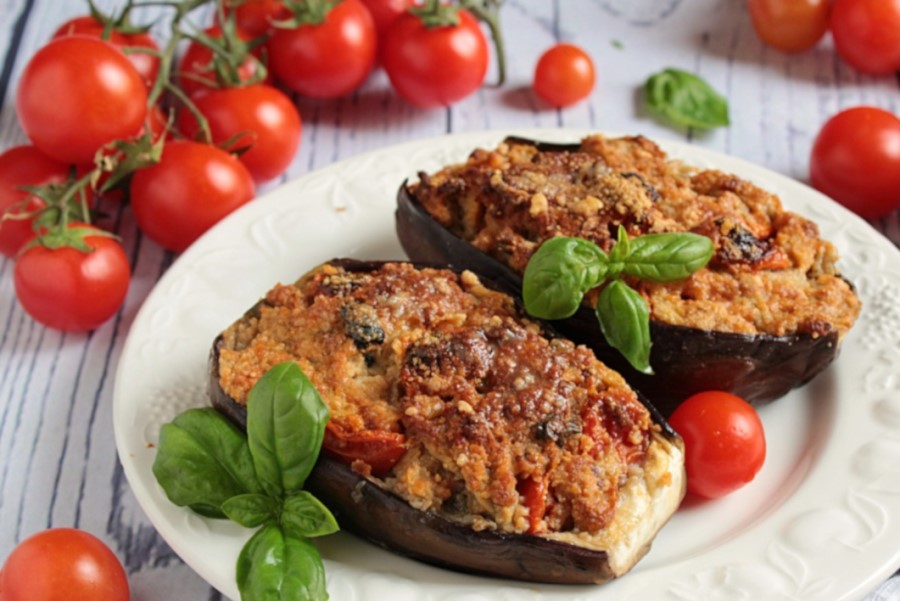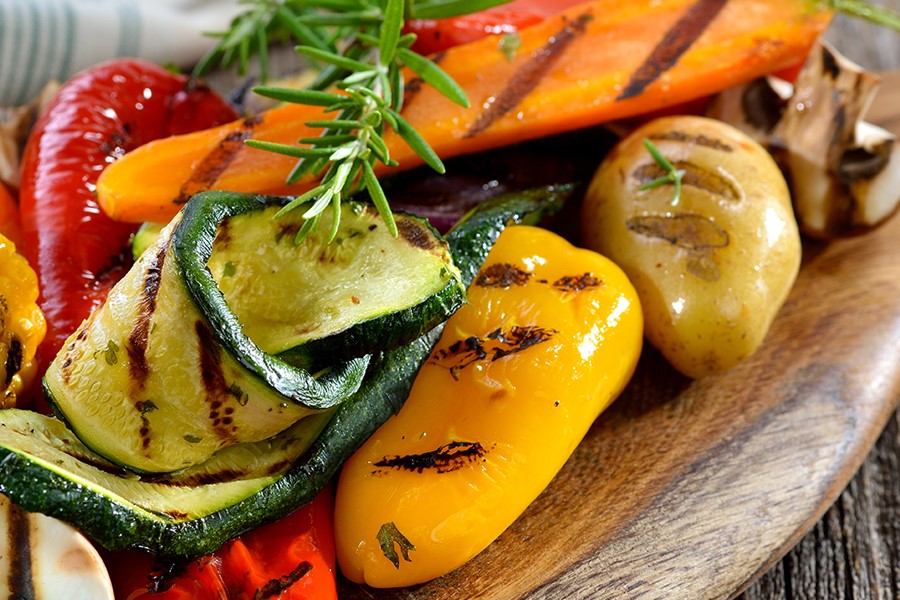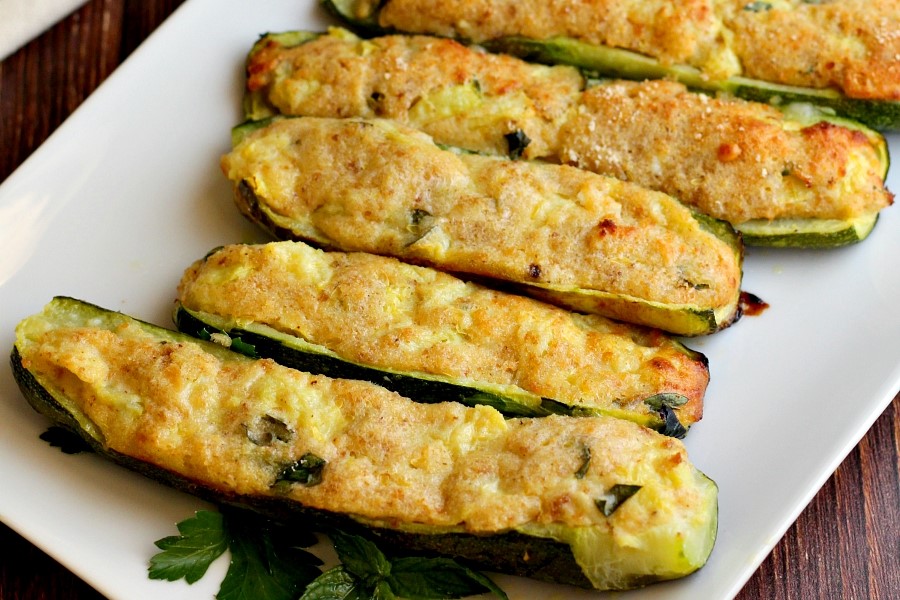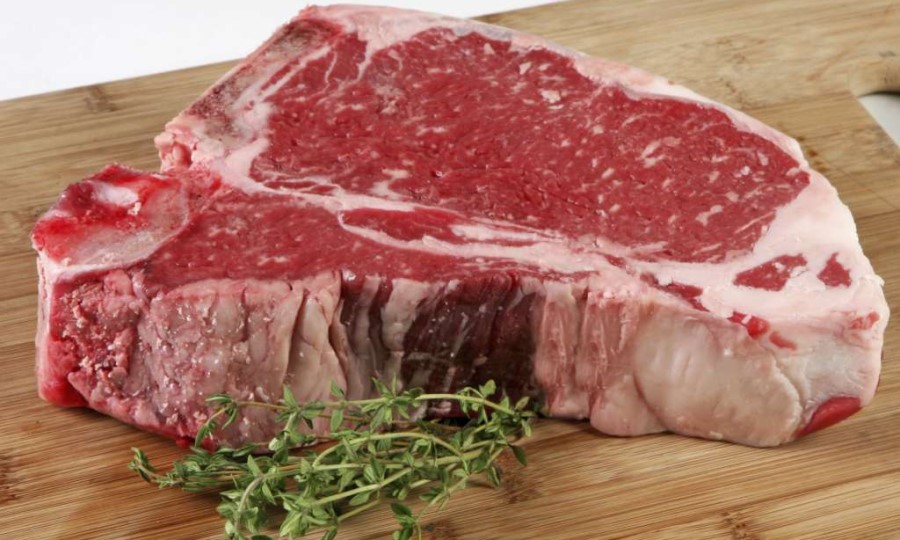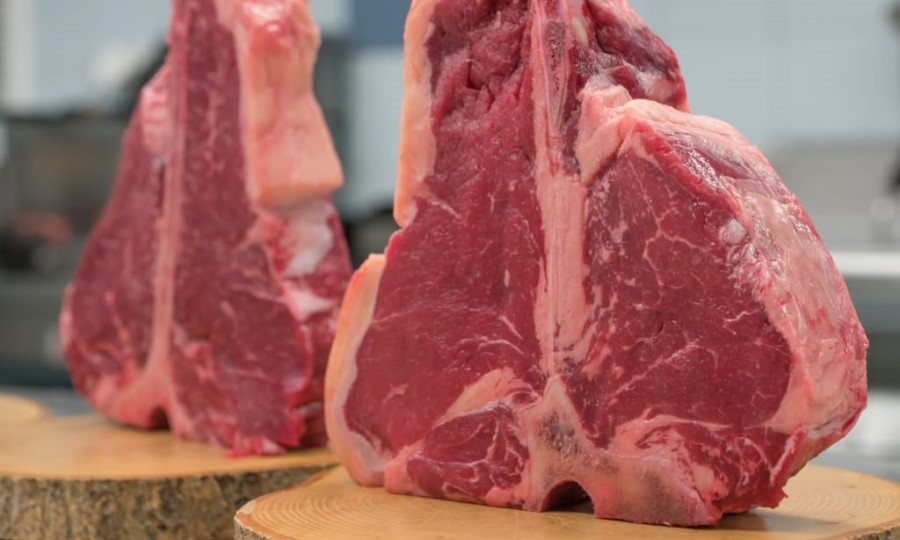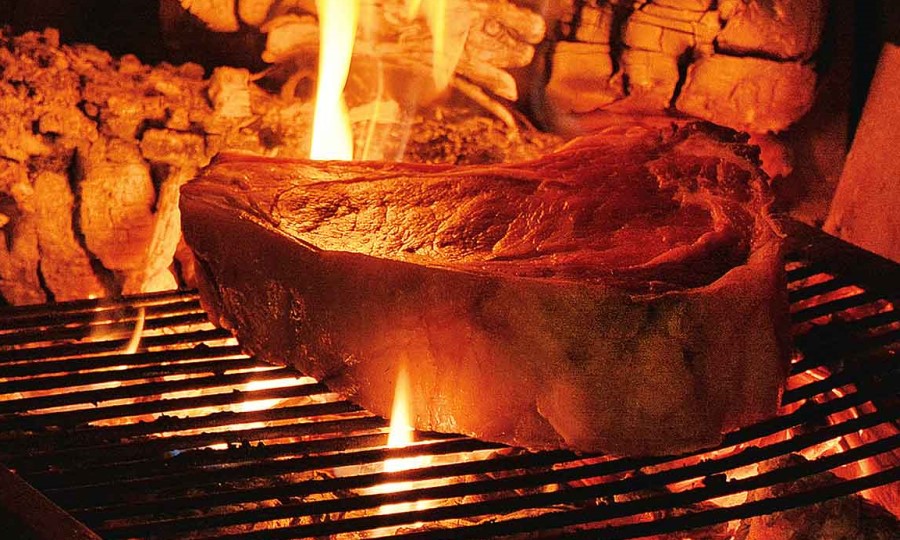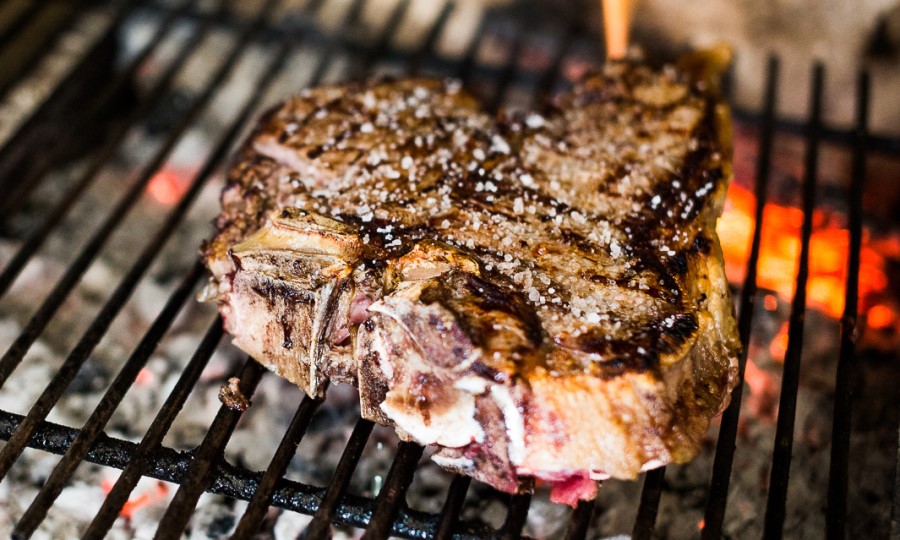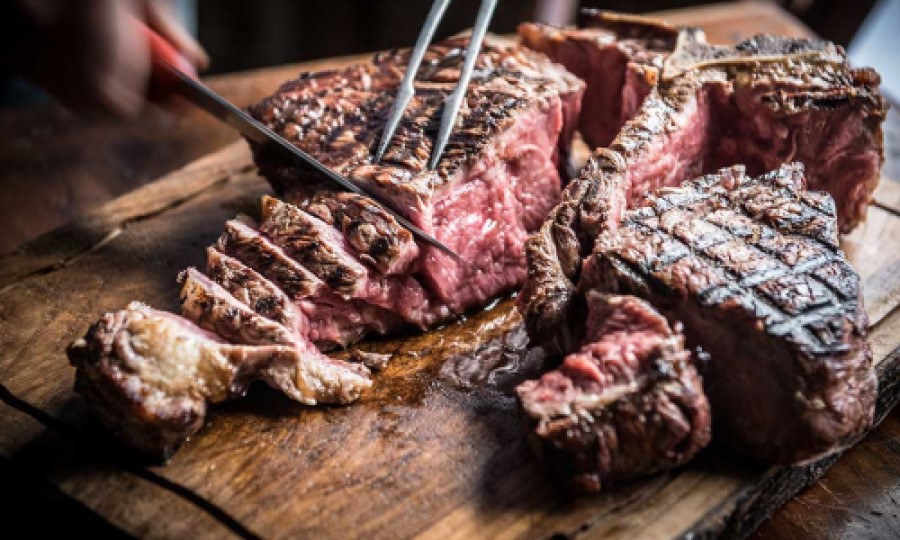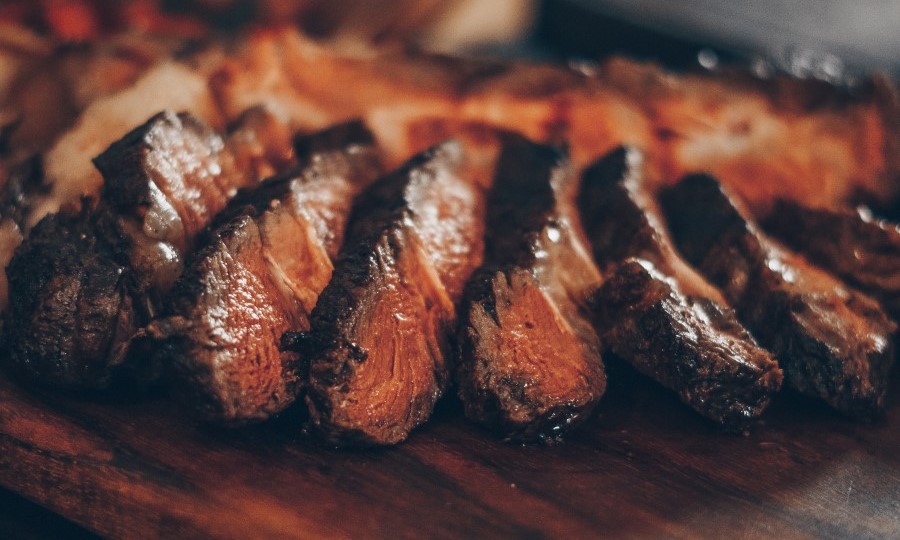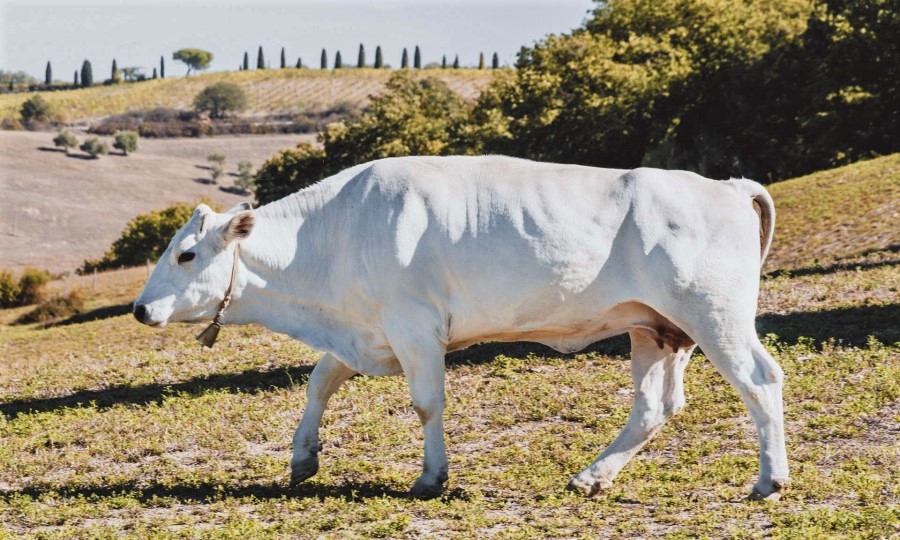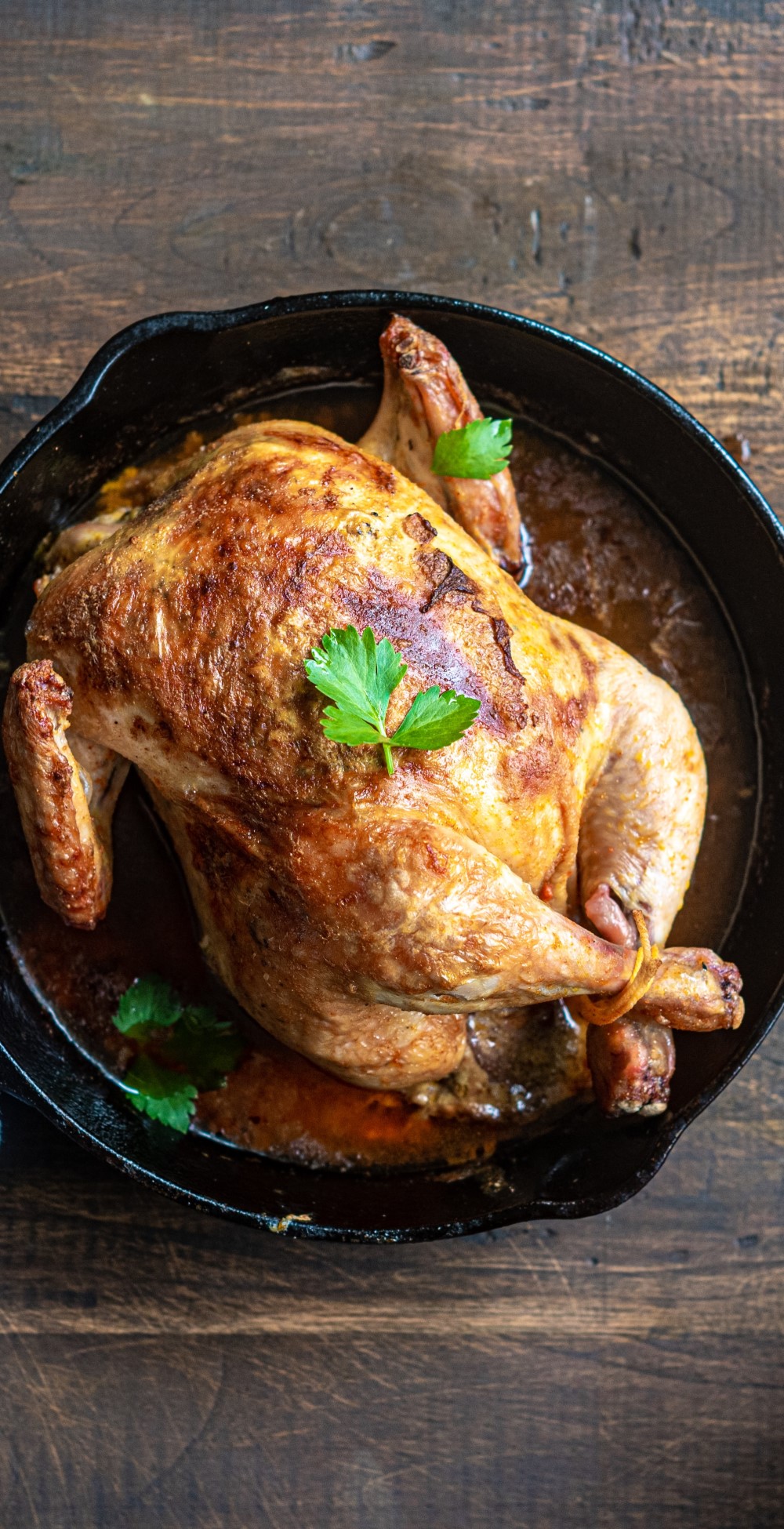
Typical Italian cuisine: Polpette
Probably the oldest meat specialty in Italian cuisine is the polpette, the small meatballs. Indeed, they were already on the menu of the Romans. In the oldest cookbook of the world, the de re coquinaria, Apicius dedicates the very first chapter to these isicia. At the Podere Palazzone holiday home, we have our own personal recipe for them. Just like every Italian Mamma. It was handed down by grandmother and will only be passed to our own daughters.
Specialty of Tusany: The Cinta Senese
Pork in Tuscany often comes from animals of the local Cinta Senese breed. These pigs originally come from the Val d’Elsa and the Val di Merse, bordering the municipality of Pomarance. It is easy to identify them by their white chest strap on black fur. Most important, they are kept free-ranging, in the middle of lush leccio and oak forests. There they feed on roots, acorns and nuts. As a result, their meat is well-marbled, a little darker and doesn’t shrink in the pan like some supermarket steaks. Certainly, in the Tuscan cuisine, it is used for roasts in herb crust. In addition, it is perfect for any type of scaloppine, whether with rosemary, lemon or Vernaccia. Another local specialty is the spezzatino di Cinta Senese, that we prepare with kitchen herbs such as fennel seeds, coriander seeds, myrrh and bay leaves. At the end, it is garnished with our olives or artichokes. Also, the strongly seasoned salsiccia is an indispensable part of Tuscan cuisine, grilled or pan-fried. However, its true home is the stew fagioli all’uccelletto, together with lots of sage from the herb garden and canellini beans.
Chicken, the symbol of Chianti
Chicken is especially grateful for any addition of herbs. That’s why it goes so well with the herb-rich Italian cuisine. As a matter of fact, the crispy grilled chicken thighs with rosemary are truly delicious. Or chicken in umido with olives, mushrooms and seasonal vegetables. The importance of chicken in Tuscany goes beyond the cuisine. Because, the Gallo Nero, the Black Rooster, is the symbol of our famous Chianti wine. According to legend, in the Middle Ages he played a crucial role in the struggle for supremacy over the Chianti region, which lies between Siena and Florence. The rulers of these two city-states agreed to settle their dispute over the course of the border by a ride: The border was to run where two horsemen met, who set off at the same time, one riding from Florence towards Siena, the other from Siena towards Florence. It was agreed to begin the ride at the first cockcrow. So, cunning Florentines took a black rooster and, for a couple of days locked it in the dark without food. As a result, on the appointed day the confused and hungry cock crowed before sunrise, which gave the Florentine rider a good lead. Thus, nearly the entire Chianti region fell under the rule of Florence.
Seasonal meat dishes in the Italian cuisine
On warm summer evenings, in the Podere Palazzone holiday home we are happy to serve lighter main courses. For example, a fresh carpaccio with rucola, or the refreshing summer classic vitello tonnato. Autumn protagonists, instead, are stronger main courses, such as ossobuco alle olive or galletto al vino rosso.
Vegetarian main courses in the Italian cuisine
It doesn’t always have to be meat. The Italian cuisine offers everything for a vegetarian main course, without compromising on enjoyment. Therefore, let yourself be surprised in our restaurant by a variety of flavours in vegetarian specialties. Often, they are even vegan. For example, the stuffed tomatoes, zucchini, onions and aubergines. Try a delicious peperonata and seasonal vegetables from the grill marinated in olive oil, or refined with herbs. All of this in best organic quality from our own cultivation. Furthermore, in the oven we prepare potato casseroles au gratin and the queen of vegetable casseroles, the parmigiana di Melanzane. There is no limit to fantasy for torte salate recipes. Equally delightful are the many frittatas and omelettes, of course made of eggs from our free-range happy hens. Very typical for Italian cuisine in our area is the sformato carciofi e patate that is prepared with fresh artichokes in spring and autumn.
However, the most popular vegetarian ingredient is mozzarella, in particular during summer. Be it in the form of a refreshing caprese with our tomatoes and basil or as a delicious burrata. Instead during cold season, we warm ourselves with cauliflower on black olives, with the local specialty cavolo nero or with a tasty zuppa Volterrana.
Side dishes in Tuscany
In Tuscan cuisine, the main carbohydrate accompaniment to main courses is bread. In the cold months we often bake it ourselves in our large oven house. During summer, light raw vegetables are very popular, especially leaf salads. What could be better than refreshing your palate with a bite into a hearty tomato? Or with a tomato salad, seasoned with our organic olive oil and homemade vinegar? We are also happy to serve steamed green beans and peas at the Podere Palazzone holiday home. Of course, the Tuscans do not go without the delicious rosemary potatoes, patate fritte, or, during colder days, with polenta.
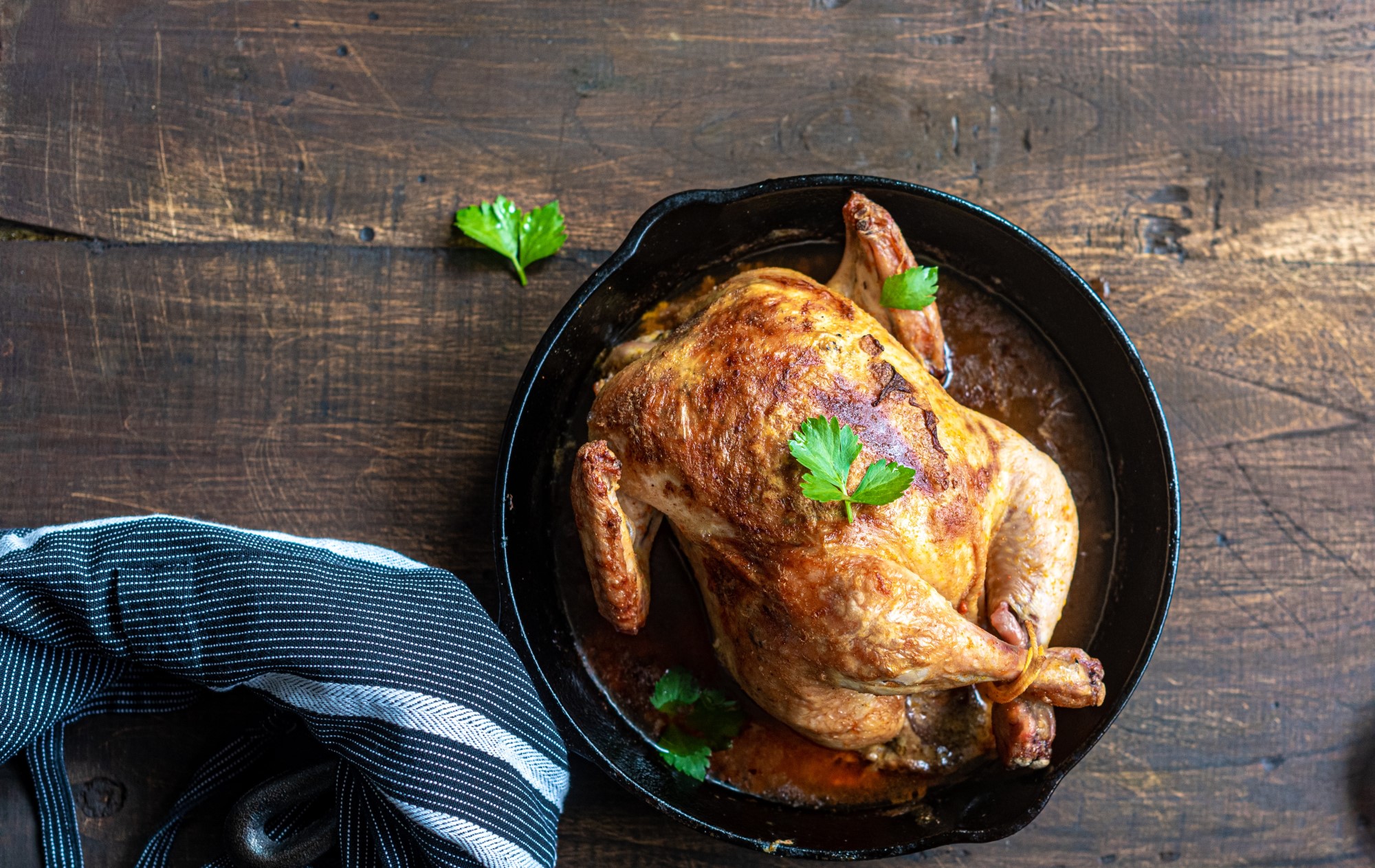
Main course in Tuscany / Italy
Typical Italian cuisine: Polpette
Probably the oldest meat specialty in Italian cuisine is the polpette, the small meatballs. Indeed, they were already on the menu of the Romans. In the oldest cookbook of the world, the de re coquinaria, Apicius dedicates the very first chapter to these isicia. At the Podere Palazzone holiday home, we have our own personal recipe for them. Just like every Italian Mamma. It was handed down by grandmother and will only be passed to our own daughters.
Specialty of Tusany: The Cinta Senese
Pork in Tuscany often comes from animals of the local Cinta Senese breed. These pigs originally come from the Val d’Elsa and the Val di Merse, bordering the municipality of Pomarance. It is easy to identify them by their white chest strap on black fur. Most important, they are kept free-ranging, in the middle of lush leccio and oak forests. There they feed on roots, acorns and nuts. As a result, their meat is well-marbled, a little darker and doesn’t shrink in the pan like some supermarket steaks. Certainly, in the Tuscan cuisine, it is used for roasts in herb crust. In addition, it is perfect for any type of scaloppine, whether with rosemary, lemon or Vernaccia. Another local specialty is the spezzatino di Cinta Senese, that we prepare with kitchen herbs such as fennel seeds, coriander seeds, myrrh and bay leaves. At the end, it is garnished with our olives or artichokes. Also, the strongly seasoned salsiccia is an indispensable part of Tuscan cuisine, grilled or pan-fried. However, its true home is the stew fagioli all’uccelletto, together with lots of sage from the herb garden and canellini beans.
Chicken, the symbol of Chianti
Chicken is especially grateful for any addition of herbs. That’s why it goes so well with the herb-rich Italian cuisine. As a matter of fact, the crispy grilled chicken thighs with rosemary are truly delicious. Or chicken in umido with olives, mushrooms and seasonal vegetables. The importance of chicken in Tuscany goes beyond the cuisine. Because, the Gallo Nero, the Black Rooster, is the symbol of our famous Chianti wine. According to legend, in the Middle Ages he played a crucial role in the struggle for supremacy over the Chianti region, which lies between Siena and Florence. The rulers of these two city-states agreed to settle their dispute over the course of the border by a ride: The border was to run where two horsemen met, who set off at the same time, one riding from Florence towards Siena, the other from Siena towards Florence. It was agreed to begin the ride at the first cockcrow. So, cunning Florentines took a black rooster and, for a couple of days locked it in the dark without food. As a result, on the appointed day the confused and hungry cock crowed before sunrise, which gave the Florentine rider a good lead. Thus, nearly the entire Chianti region fell under the rule of Florence.
Seasonal meat dishes in the Italian cuisine
On warm summer evenings, in the Podere Palazzone holiday home we are happy to serve lighter main courses. For example, a fresh carpaccio with rucola, or the refreshing summer classic vitello tonnato. Autumn protagonists, instead, are stronger main courses, such as ossobuco alle olive or galletto al vino rosso.
Vegetarian main courses in the Italian cuisine
It doesn’t always have to be meat. The Italian cuisine offers everything for a vegetarian main course, without compromising on enjoyment. Therefore, let yourself be surprised in our restaurant by a variety of flavours in vegetarian specialties. Often, they are even vegan. For example, the stuffed tomatoes, zucchini, onions and aubergines. Try a delicious peperonata and seasonal vegetables from the grill marinated in olive oil, or refined with herbs. All of this in best organic quality from our own cultivation. Furthermore, in the oven we prepare potato casseroles au gratin and the queen of vegetable casseroles, the parmigiana di Melanzane. There is no limit to fantasy for torte salate recipes. Equally delightful are the many frittatas and omelettes, of course made of eggs from our free-range happy hens. Very typical for Italian cuisine in our area is the sformato carciofi e patate that is prepared with fresh artichokes in spring and autumn.
However, the most popular vegetarian ingredient is mozzarella, in particular during summer. Be it in the form of a refreshing caprese with our tomatoes and basil or as a delicious burrata. Instead during cold season, we warm ourselves with cauliflower on black olives, with the local specialty cavolo nero or with a tasty zuppa Volterrana.
Side dishes in Tuscany
In Tuscan cuisine, the main carbohydrate accompaniment to main courses is bread. In the cold months we often bake it ourselves in our large oven house. During summer, light raw vegetables are very popular, especially leaf salads. What could be better than refreshing your palate with a bite into a hearty tomato? Or with a tomato salad, seasoned with our organic olive oil and homemade vinegar? We are also happy to serve steamed green beans and peas at the Podere Palazzone holiday home. Of course, the Tuscans do not go without the delicious rosemary potatoes, patate fritte, or, during colder days, with polenta.
- Bistecca Fiorentina, the right one -
Of course, the Florentine Steak, called Bistecca alla Fiorentina, deserves a place of honour in Tuscan cuisine. For the real Florentine Steak, you need three things: the right beef, the right steak and the right embers.
The Chianina beef
The Florentine Steak comes from Chianina cattle, an old-established breed of Tuscany. The rearing of this white cattle is subject to regulations that make it compulsory keeping it on pasture. With the Chianina trademark, the beef’s life cycle can be traced all the way from breeder to the authorised butcher’s shop.
The steak
We leave the aging of the meat, crucial for its tenderness, to Nicola, our trusted master butcher in Pomarance. The T‑bone steak is cut from the roast beef of the about 20-month-old beef, at least two fingers high and weighing from 1.2 kg and upwards. Three fingers high is better, because then it can “stand on its side”.
The embers
Preparing the embers is an art in itself. At the Podere Palazzone holiday home, we use holm oak, oak or olive wood. Once the flame has caught the matches, all the pieces of wood are added to create, over the course of one hour, a flameless ember. This is distributed over the grill surface and the grate placed at a height of about 12 cm. Now the steak, which has previously reached room temperature, is placed on top. It needs to grill at highest heat to quickly form a strong crust. This prevents the juice from escaping. In order not to damage the crust, the meat is only turned with tongs and not with a fork.
Buon appetito!
The Florentine Steak is deliciously crispy on the outside, while remaining pink-red, tender and juicy on the inside. Bistecca-Fiorentina-purists like the meat decidedly bleu. They swear to season it with neither salt nor pepper, neither rosemary nor olive oil. Because all the necessary flavours are already contained in a good Florentine Steak. However, in our restaurant that’s up to everyone.



